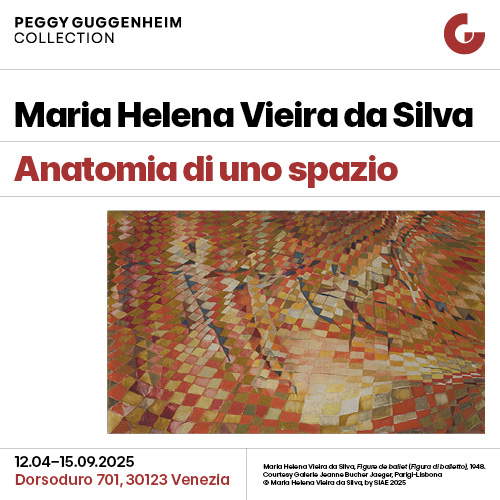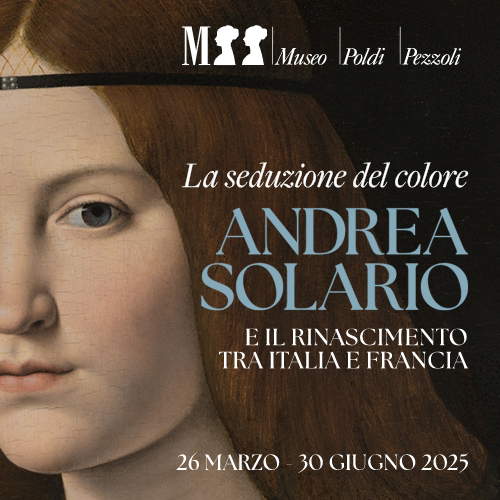Mantegna's Pala Trivulzio returns to Castello Sforzesco with restored historic frame
After long and meticulous restoration work, Andrea Mantegna’s Madonna and Child among Saints and Angels, known as the Trivulzio Altarpiece, is once again on display in the Sala della Balla of Milan’s Castello Sforzesco. The work returns to be admired with its imposing historical frame, an architectural element of extraordinary importance, recently recovered thanks to an intervention promoted by the Castello Sforzesco’s Collections of Ancient Art with theSala delle Asse Association. The restoration was made possible by a donation from Renée Bormioli, in memory of her parents Luigi and Maria Antonietta Bormioli, and contributions from Pilot Italia and Fondazione Cariplo.
The Trivulzio Altarpiece became part of the Civic Collections in 1935, when the City of Milan acquired the prestigious Trivulzio Collection, a complex of priceless possessions ranging from the precious library to late antique ivories, from paintings to the famous tapestry cycle of the Months. However, after the war, the rearrangement of the castle’s museum collections, curated by Studio BBPR, led to the drastic decision to eliminate many ancient frames, considered incongruous with the new exhibition lines. This fate also affected the majestic frame of the Pala Trivulzio, which was replaced by a more sober framing. The decision to remove these decorative elements had irreversible consequences: many frames were disassembled and piled up in unsuitable storage areas, suffering irreparable damage due to displacement and unfavorable environmental conditions.
The frame of the Pala Trivulzio, which exceeds five meters in height, was initially placed in an uncovered area of the castle, then moved to an external storage room and finally to a warehouse, where it was identified only a decade ago. Its recovery began in 2023 thanks to the initiative of Luca Tosi, curator of the Collections of Ancient Art, with the support of the director of the Museums Area of Castello Sforzesco, Francesca Tasso. Analyses conducted during the restoration revealed the complexity of the frame, the result of interventions carried out at different times and by different craftsmen, united by the intent to create an impressive decorative structure. The final result dates back to the last decades of the 19th century and can be attributed to an unknown collaborator of the noble Trivulzio family.
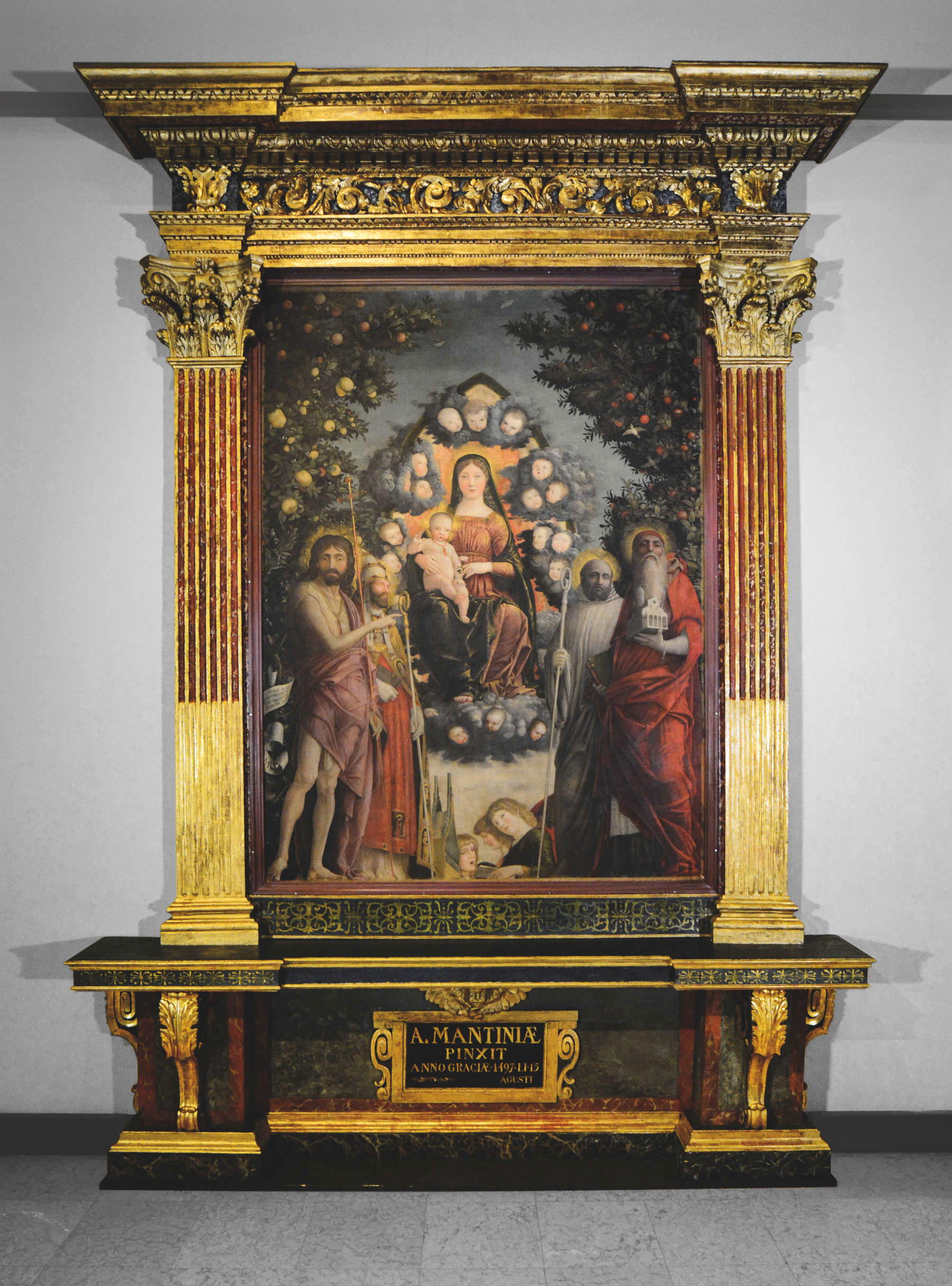
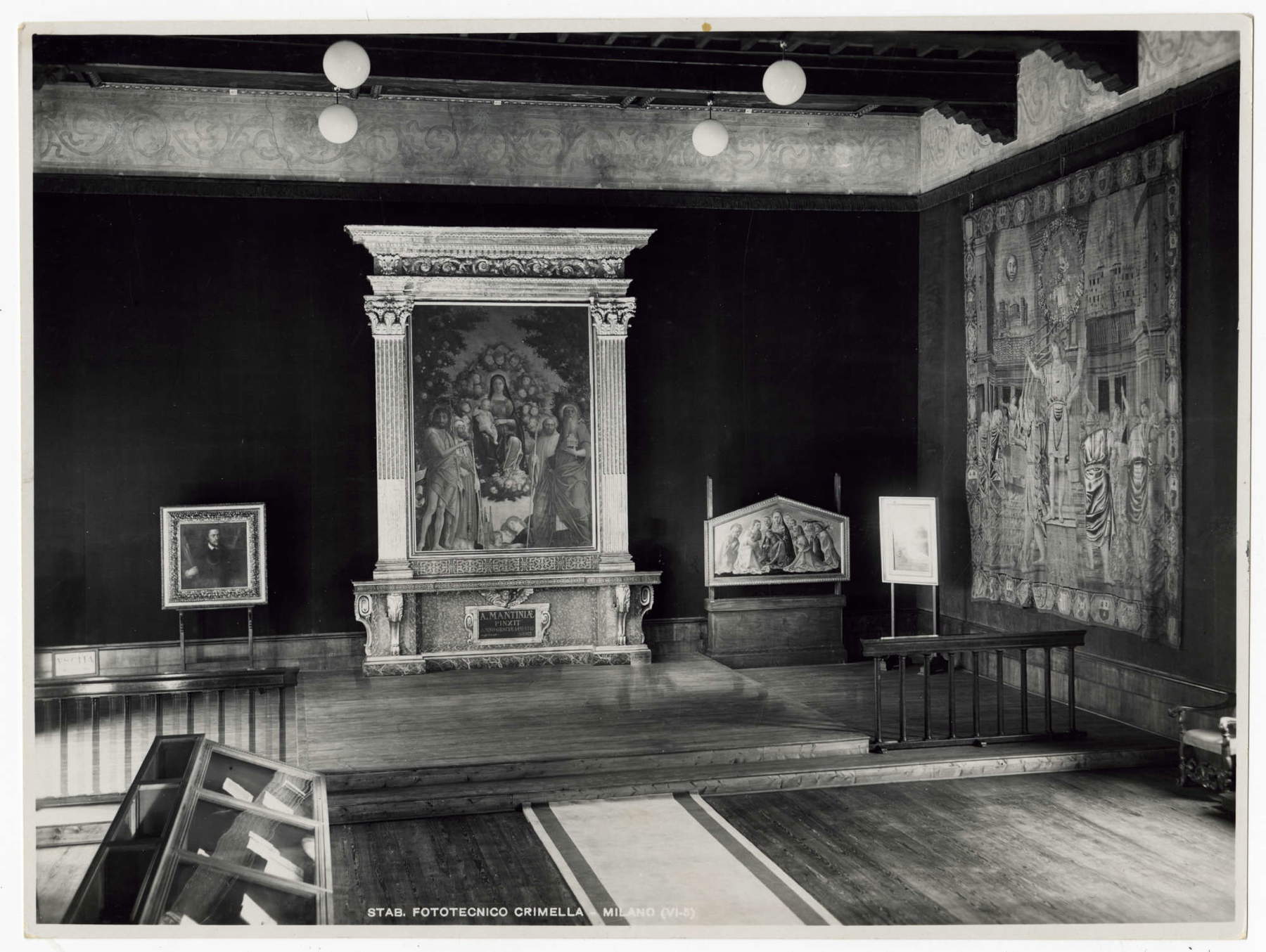

The restoration of the frame of the Pala Trivulzio
The restoration of the frame of the Pala Trivulzio, on display at Milan’s Castello Sforzesco, was a long and complex operation, carried out between 2023 and 2025 thanks to a donation from Renée Bormioli and the support of Pilot Italia S.p.A. and Fondazione Cariplo. The work, entrusted to Luca Quartana Restauri, involved the collaboration of experts and scholars who reconstructed the history of the frame, analyzing its materials and execution techniques.
The frame is not original to the work, but the result of later interventions. The altarpiece, made by Andrea Mantegna in 1496 for the monks of Monte Oliveto in Verona, had a 15th-century frame, attributed to Fra Giovanni, but this was replaced over time. Over the centuries, the framing underwent modifications and readjustments, culminating in the 19th-century version attributable perhaps to architect Emilio Alemagna. After the Trivulzio Collection was purchased by the City of Milan in 1935, the altarpiece was displayed with its frame. However, after the war, the refitting of the Castello Sforzesco curated by Studio BBPR led to the removal of many of the frames, which were considered incongruous. The Trivulzian frame was abandoned in inadequate storage, suffering severe damage. Only a decade ago was it identified and recovered, thanks to research and historical documentation.
The restoration required careful analysis of materials and decorative techniques. The frame was found to be composed of elements from different eras: the 19th-century base, the late 16th-century cymatium, and pilasters from the 17th-century period. The poor condition of the frame, which had been stacked for years in an un-air-conditioned storage room, required the participation of several highly specialized restoration professionals from the very first phase of the operation, that of planning the intervention. Once all the constituent elements had been identified and disassembled in the warehouse, it was necessary to proceed with the securing of the most compromised parts, so that the pieces of the frame could be transferred to the laboratory: preliminary and provisional fixings of all areas of polychromy affected by detachment and lifting were then carried out, using tissue. The interventions included: cleaning from deposits and postictive varnishes; consolidation of the wooden parts and gilding; reconstruction of the missing parts with wood and carvings consistent with the original (in collaboration with G.S.A. Ebanisteria di Giuliano Piseddu); chromatic and gilding reintegration; and design of a new mounting system to ensure stability and safety. Important was the work of Studio Tillverka (specializing in 3D digital graphic detection), which, based on a design by architect Marco De Poi, developed a 3D model of the frame that allowed for a detailed study of the reconstruction methods and final assembly.
Thanks to this work, the Pala Trivulzio is now visible again in its historical frame, enhancing Mantegna’s work and the museum context of the Castello Sforzesco.



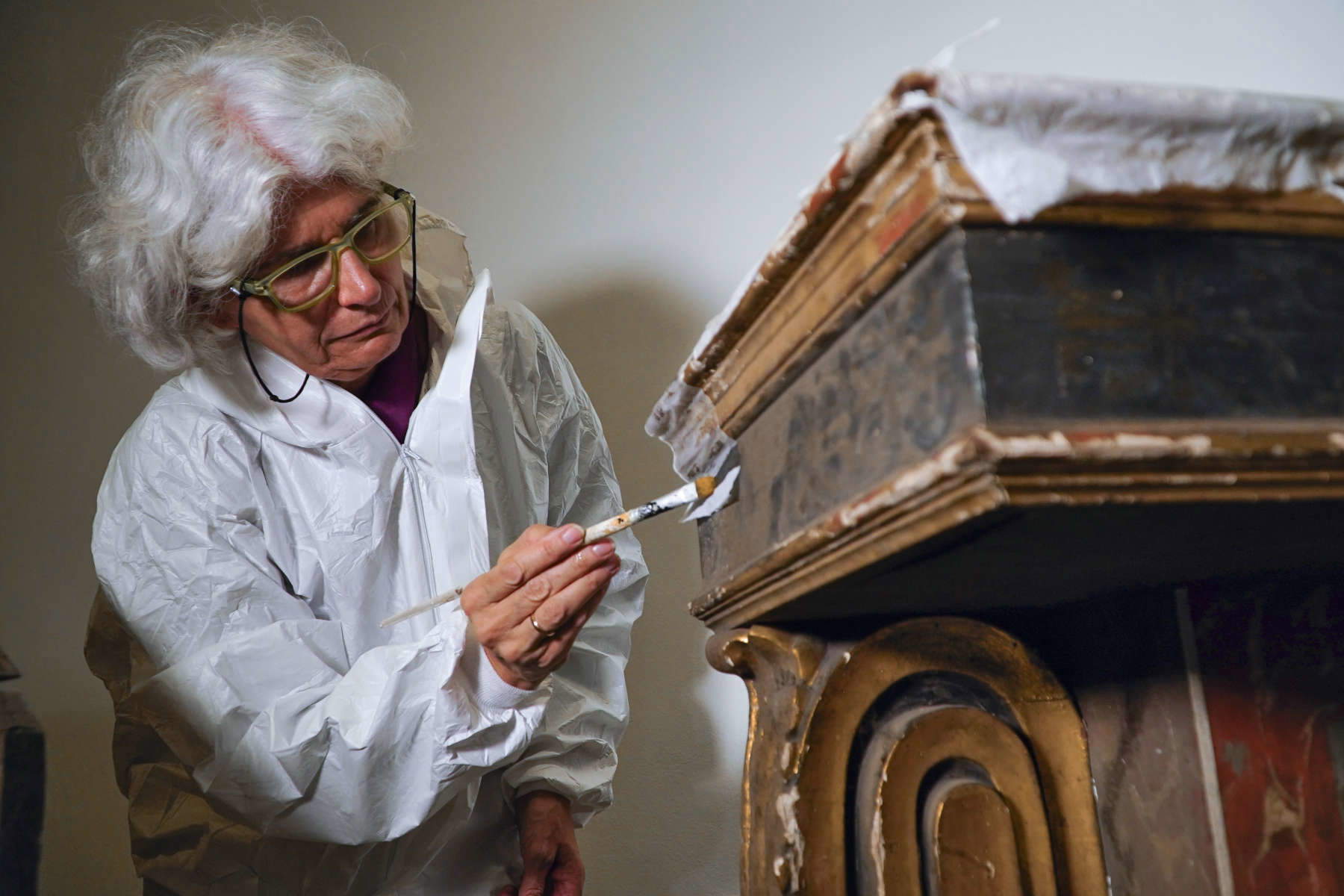
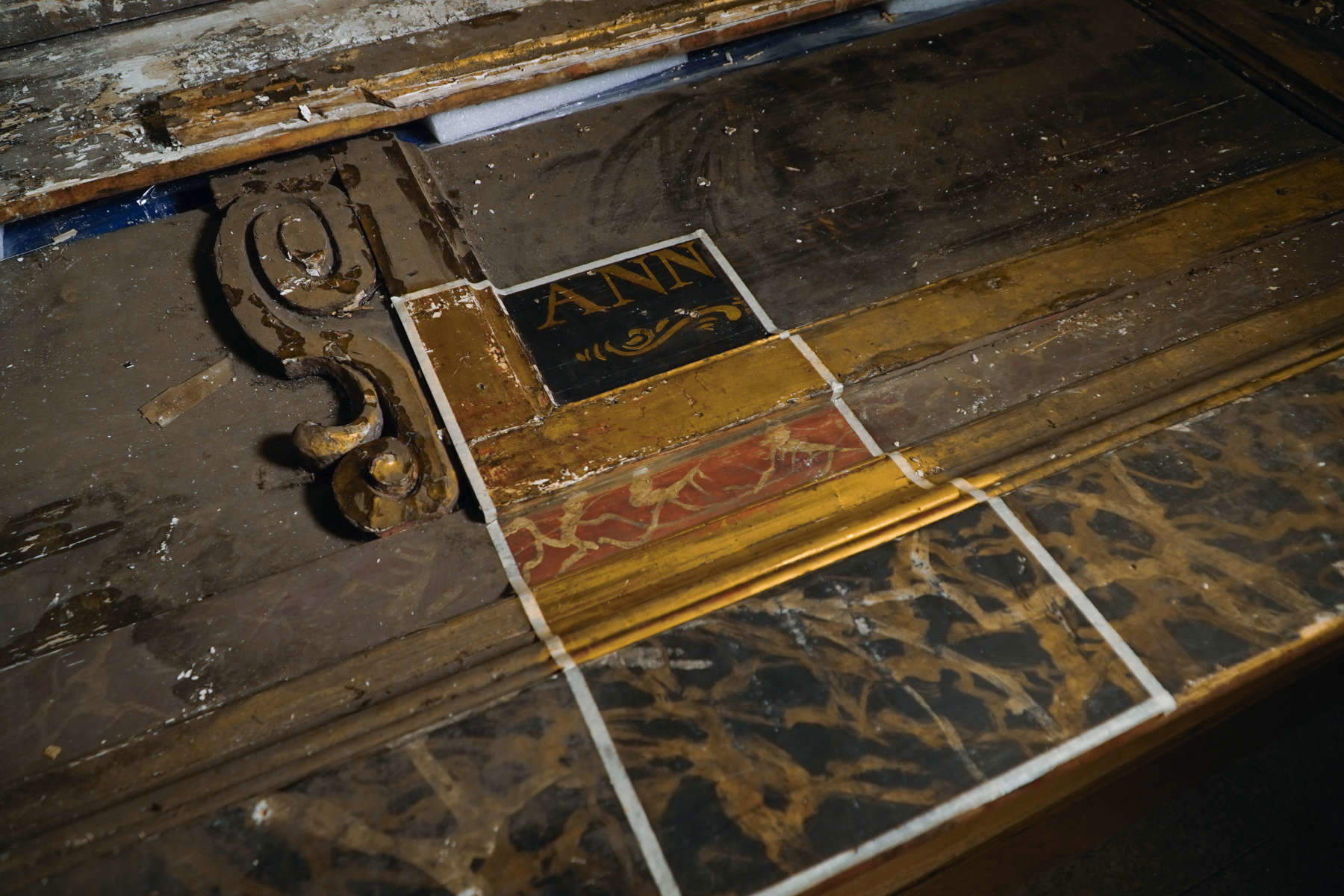
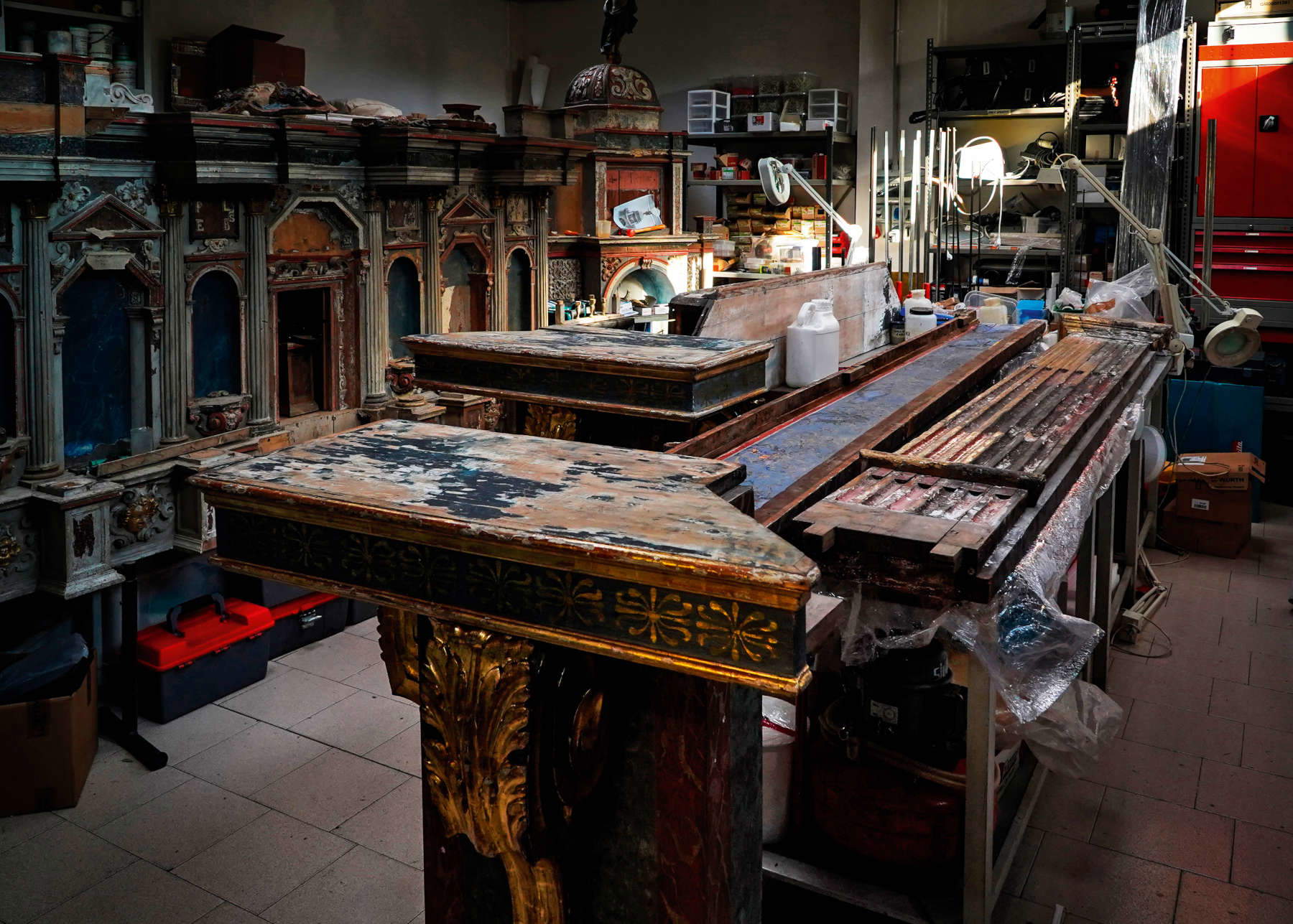
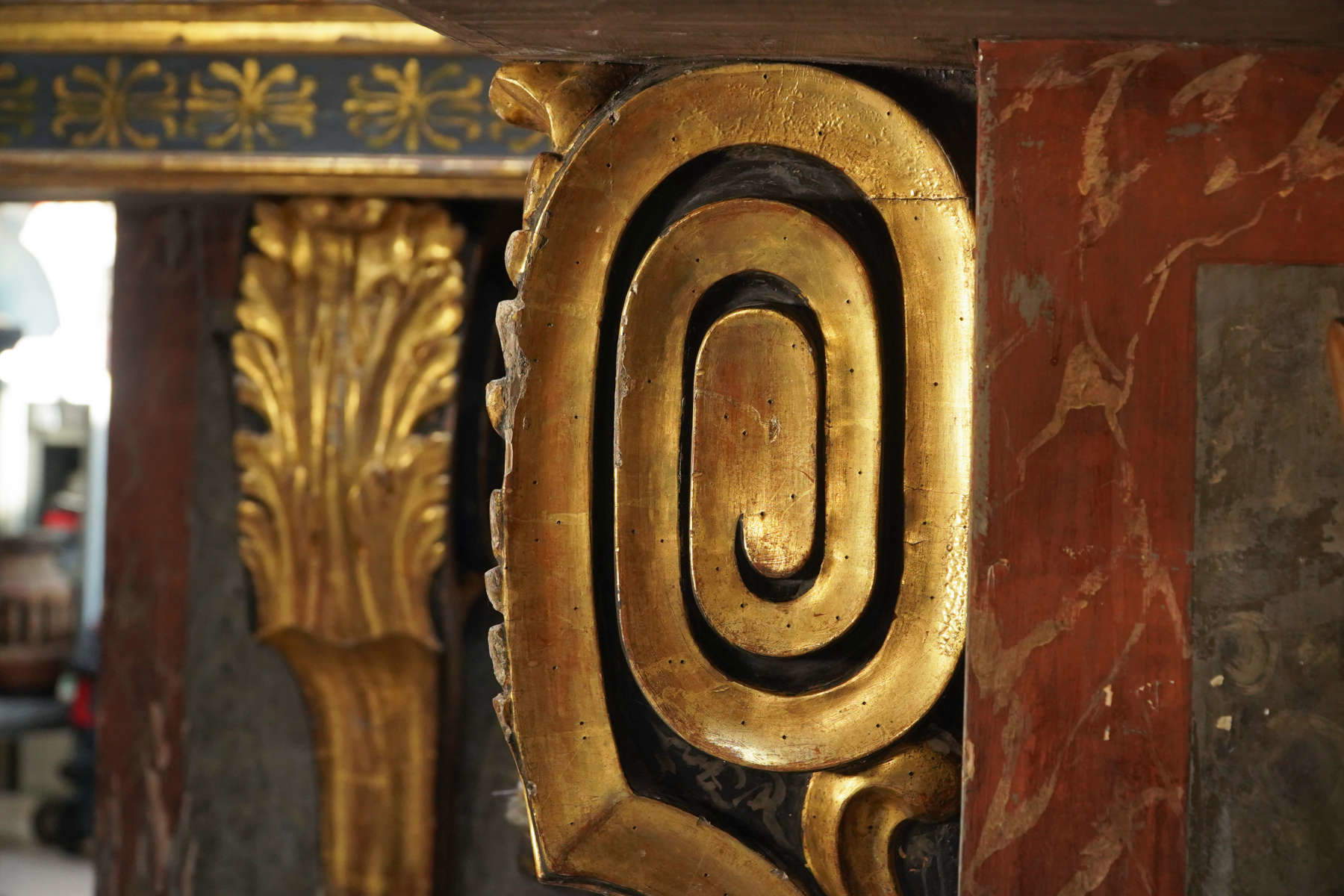
The importance of the intervention
The rediscovery of the original frame was a moment of great importance for the enhancement of Mantegna’s work. This intervention was documented within the book Restorations, Donations and Travels: 25 Years of the Sala delle Asse, published on the occasion of the new display of the Pala Trivulzio. The book chronicles a quarter of a century of the Sala delle Asse Association’s commitment to supporting restorations, acquisitions and donations on behalf of Castello Sforzesco, with which it has maintained a deep connection since its founding in 1997.
With the return of the Trivulzio Altarpiece to its original setting, the public can now rediscover Andrea Mantegna ’s work in its entirety, admiring not only the painting’s extraordinary pictorial quality, but also the imposing wooden structure that frames it, an integral part of its history and museum enhancement.
“The Trivulzio Altarpiece finally regains its original appearance, enhanced by its historic frame, which today, after an important restoration and recovery, we give back to the city and to the many visitors and visitors to the Castello Sforzesco,” said Culture Councillor Tommaso Sacchi. “This is an important and decisive operation to give due prominence to this masterpiece by Mantegna, and it was made possible thanks to the professionalism of our offices, the commitment and collaboration with the Sala delle Asse Association, which has always cared about Castello Sforzesco and its treasures, and the generosity of the Bormioli family.”
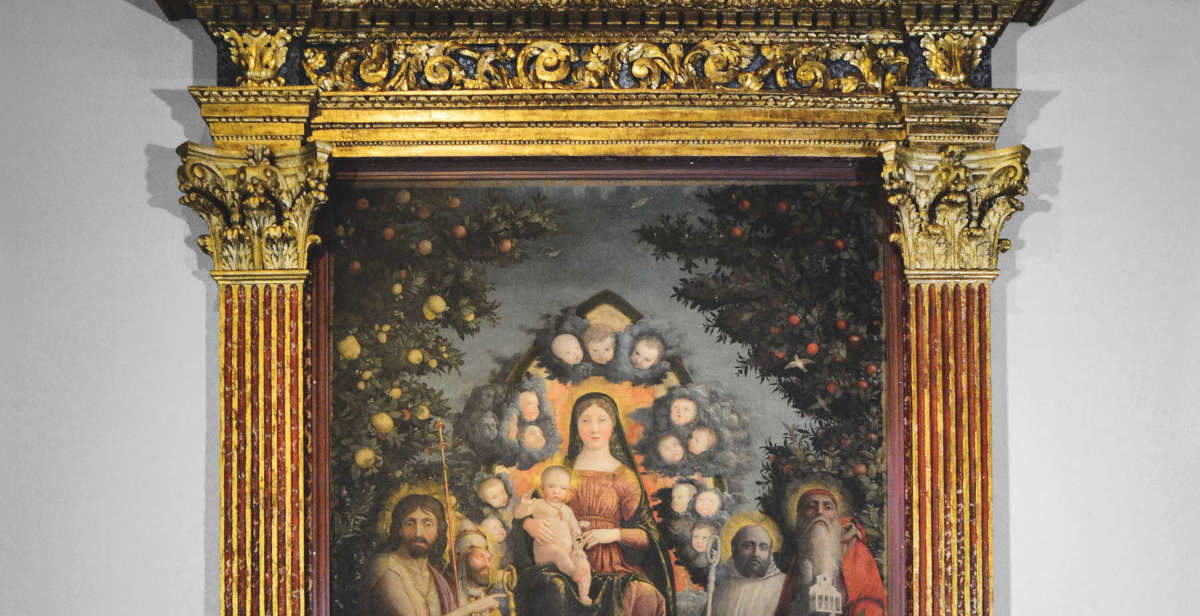 |
| Mantegna's Pala Trivulzio returns to Castello Sforzesco with restored historic frame |
Warning: the translation into English of the original Italian article was created using automatic tools. We undertake to review all articles, but we do not guarantee the total absence of inaccuracies in the translation due to the program. You can find the original by clicking on the ITA button. If you find any mistake,please contact us.





